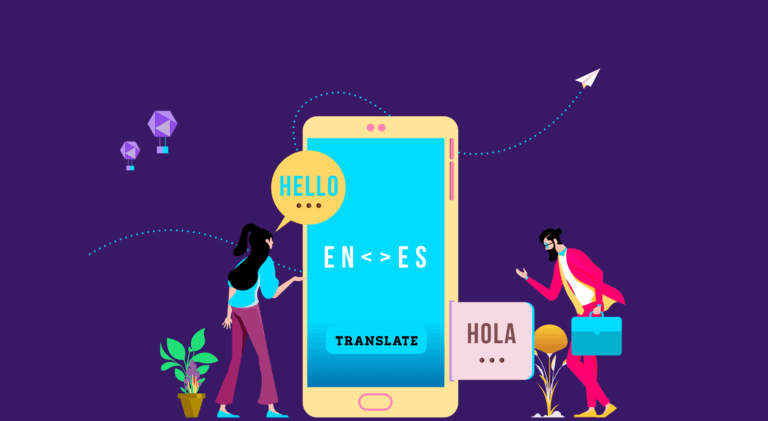
Transcript translation is the process of converting written words from one language to another. It may or may not involve transcribing the audio or video to text and then translating it into another language.
Transcript translation allows communication and understanding between people who may or may not speak the same language. Businesses often seek transcript translation services in the legal, education, and healthcare industries, where without accurate translation, communication is not possible.
This, however, is one of the many important reasons companies seek the best transcript translation services. After all, if this were the only reason, one would use Google Translate and be done with it, right? But both non-official and official transcript translation services involve more than just converting a word to one language from another, as we’ll see in this blog.
Transcript and Translation Services: Differences

Transcription is the process of converting audio or video to text. In contrast, translation is the process of converting text from one language to another.
- Transcription refers to converting spoken or audio language into written or text form. It involves listening to an audio recording or spoken language and then typing out the words that are spoken. The result is a written document that captures the spoken language in a written format.
- Translation, on the other hand, refers to converting written or spoken language from one language into another. It involves taking the text from one language and rendering it into another. The goal is to convey the same message and meaning in the target language as in the source language.
Importance of Transcript Translation

Transcribers and translators transcribing are assigned the delicate task of converting the text but retaining its soul. Nonetheless, translation often takes away the elegance and grace of the original text if not done contextually. Trust services that give immense importance to context and employ native translators. While this is inevitable, this shouldn’t stop you from hiring transcription translation services, for the benefits are many:
1. Expand audience
Communication material in a single language grossly limits the audience you can tap into. Why keep your business limited when you can easily expand?
Translation of your communication material, including transcript translation, can expand your audience. If done consistently, it can establish your business in global markets.
2. Remove language barriers
If you publish content that creates conversations and invites ideas with a single language, you’ll only be able to interact with a particular category of people. Ideas and conversations, however, should be rich and diverse for them to be out of the box.
Translating your content can help ensure that language is no barrier to these conversations and ideas. The best transcript translation services will ensure they retain the central idea of your content and translate it in a way that incites conversations and invites ideas.
3. Expand product line
You can make significant changes to your video or audio structure or product offerings using foreign language transcriptions. Having your transcripts translated can broaden your reach and appeal to a more diverse group of people, allowing you to make more informed decisions for your brand.
Transcript translation can also help you expand the scope of your brand’s decisions by enabling you to create content that many viewers can understand.
Plus, by translating for a multilingual audience, you can improve the relevance of your content. This can help you forge deeper and more meaningful relationships with your audience. This can improve your brand equity.
4. Differentiate yourself from the competition
Translating transcripts gives you an advantage over competitors who do not offer content in multiple languages. By providing your customers with a localized version of your communication, you can set the standards of quality and customer service.
This can help you to attract more customers, increase your brand’s visibility, and grow your business.
5. Consult the data
If your website and YouTube channel attract visitors from non-native English speakers and audiences from foreign countries, it might help serve them in their own language. Translating transcripts to the mother tongue of your unexpected audience can help build momentum and help you grow.
6. Search engine optimization
Translating transcripts can be good if you post podcasts or video transcripts online and do multilingual SEO. Targeting keywords in the native language will help you get more organic traffic on your website and even social media channels.
7. Authentic experience
Providing a personalized and authentic online experience for your global customers should be the main motivation for translating transcripts and other communication assets. This can improve your brand recognition, furnish your services with appropriate content, and serve your specific target market in a way that surpasses your rivals.
Your international customers should have a user experience comparable to that of your original website. Giving them that level of excellence is not only a requirement but also expected.
They might understand English, but content in their local language improves customer experience manifold, encouraging them to choose you over the competition.
Transcript translation is an essential process for businesses in various industries to facilitate communication and understanding between people who may or may not speak the same language. It’s more than just converting words from one language to another. It’s about retaining the essence and meaning of the original text.
The best transcript translation services can help businesses to expand their audience, remove language barriers, and make informed decisions for their product line and business structure. Whether for official or non-official use, it’s important to seek professional transcript translation services to ensure your message is accurately conveyed in the target language.

FAQs
1. Do not edit, explain, or expand the original transcript during translation. The result should match the source document, save for language.
2. You should not attempt to make the translated transcript more accessible.
3. Transcription does not involve customizing the content to the location, country, or geography you’re catering to.
When choosing transcription and translation services, it is essential to consider factors such as the quality of their work, their expertise in your industry and language, their ability to meet deadlines, security protocols, cost, customer service, the use of technology, and the format of the final product.
Several key points exist when looking for a company to provide transcript translation services. Look for a company that can deliver accurate and high-quality translations on time. It is also important to choose a company that uses the latest technology to ensure the accuracy and speed of the transcription-translation process. Also, check if they are certified by professional organizations and if the company offers the language pair you need.
Certified translation is necessary when official documents must be presented to the government or legal authorities. Translations ensure the documents can be understood by the authorities that need to review them.
Latest Blogs
Learn how to rank on AI search engines like ChatGPT, Perplexity, and Gemini by optimizing your content for authority, structure, and relevance. Stay ahead in AI-driven search with this strategic guide.
Explore the best healthcare SEO services for your medical practice. Improve online visibility and effectively reach more patients in need of your services.
Discover top social media agencies specializing in banking solutions, enhancing financial services and driving engagement.
Get your hands on the latest news!
Similar Posts

Translation
5 mins read
All You Need to Know About Language Translation and Terminology Management

Translation
5 mins read
6 Reasons to Translate Content into German

Translation
5 mins read